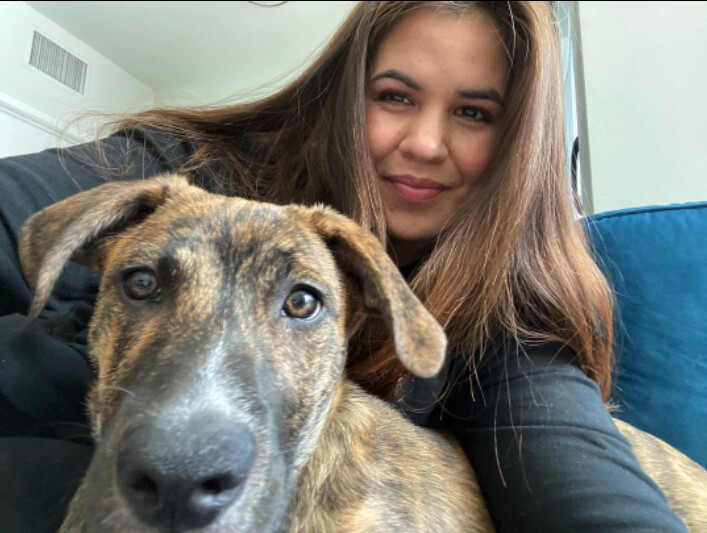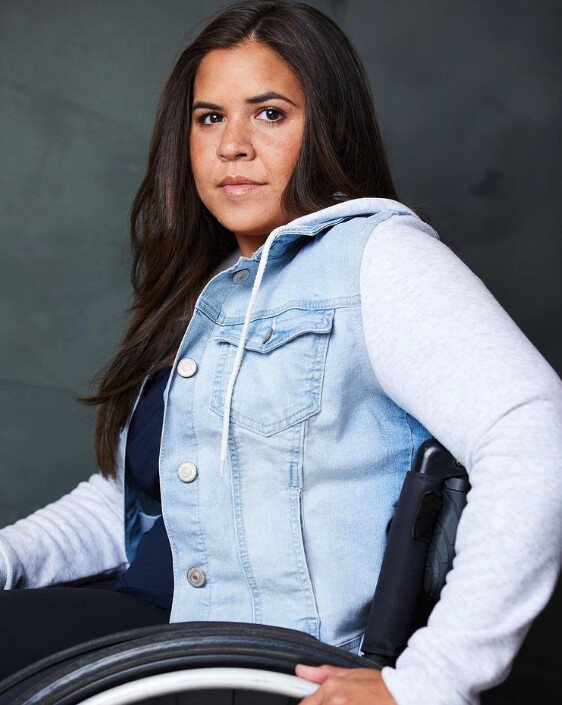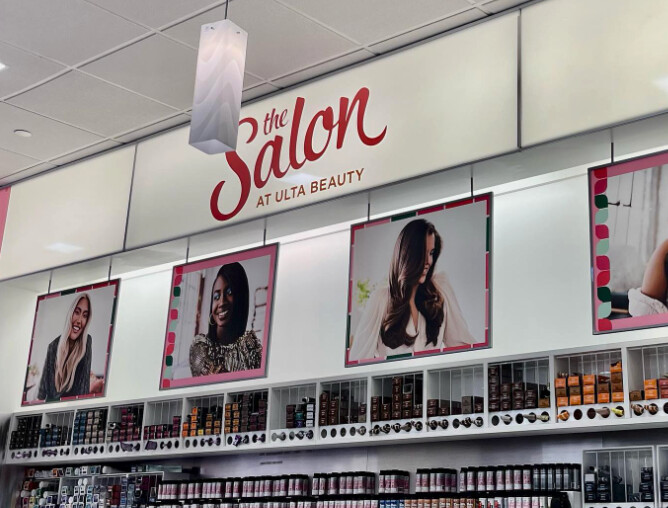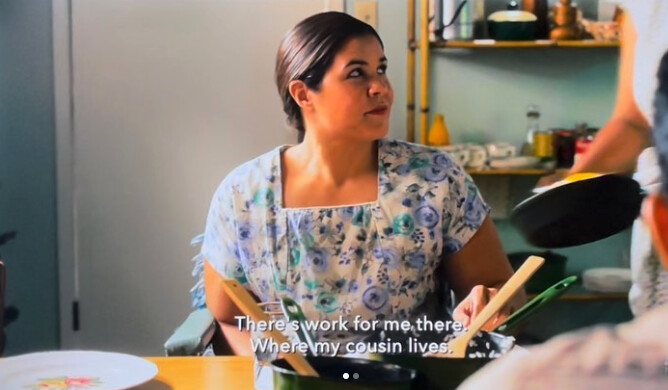When Miriam Blanco was 7 years old, her second-grade class was putting on a musical, and she wanted the lead role. Like many precocious second graders, she loved being on the stage acting and singing the music. The solo role was ultimately performed by an ensemble—including Miriam—to accommodate so many young performers, but regardless, little Miriam had her moment on stage and a big dream began.
Soon after her big debut, however, Miriam developed some insecurities about her dreams of life on a stage. Vulnerable thoughts like What will other people think of me? Can I really do this? entered her mind. And young Miriam’s insecurities were even more compounded than most: she was born a disability that limits her mobility, often necessitating the use of crutches or a wheelchair.
“I never saw anyone with a disability on stage before, so why would they let me on a stage to do this?” she remembers thinking.
She couldn’t have known it then, but years later her curiosity for the stage, new insights about her disability, and a deeper understanding of her relationship with God would open new doors and allow her to expand her tiny dream into something much bigger—commercial modeling and acting. And her work has not only helped fulfilled her personal passions, it has also helped expand what’s possible and bring more visibility to people with disabilities as well.
Miriam, 33, is a lifelong member of The Church of Jesus Christ of Latter-day Saint from Maryland. She was diagnosed with cerebral palsy as a baby, but she was missing many of the symptoms usually seen with the disorder.
For example, she didn’t have any abnormal brain development or damage, and all her symptoms were from the waist down. As she matured, her abilities and mobility grew more limited and her legs grew weaker—also unexpected in a non-progressive disorder like cerebral palsy. She went from walking as a kid to using a wheelchair in high school. And that deterioration took a toll on her emotionally.
“Honestly, I thought that was it was me being weak and giving up too soon,” she says.
But as a young adult, Miriam found a new doctor who felt confident that her issue was not cerebral palsy, but something else. After more rounds of testing, Miriam received a new diagnosis: a rare neurodegenerative disease called hereditary spastic paraplegia type 3a.
The new diagnosis provided a much better explanation for her symptoms. “It’s a progressive disease, so everything in my life made more sense,” she says. “That was a huge weight lifted when I got that diagnosis. I was so hard on myself for a really long time for something I couldn’t control.”

Today, Miriam can only stand unassisted for a few minutes or can stand for about an hour if she has something to support her. She often uses a wheelchair for practical reasons outside her home, but in smaller spaces, she can use forearm crutches. She’s currently training her Boxollie (a Boxer/Border Collie mix) puppy, Huey, to be a mobility service dog so that he can help stabilize her. But since her disease is so rare, the future of Miriam’s mobility is unknown.
“When I was a kid, I definitely misunderstood the assignment of having an eternal perspective,” Miriam explains. “I was hyper-focused on a belief that after this life I would have a perfect body, which I think really devalued the body I had. Getting re-diagnosed … was one of the saddest moments of my life, part of the reason being that I now knew I had a rare, non-inherited genetic disease. … As I grieved, I felt like I finally understood what it meant to have an eternal perspective—recognizing God’s work from beginning to end. Yes, this was God’s doing, but it was intentional. God gave me the body I needed for this life, for all the experiences I need to learn and grow, and for all the work I can do making the world we all have to pass through a better one. In short, my faith has moved me into action, from waiting for a perfect body to doing all that I can with the one I have now.”
Miriam studied advertising at Brigham Young University and said that college was a pivotal time for her in rediscovering who she was, what she loved, and what was possible for her.
“I was chasing this thing that thrilled me,” she says. “In advertising, it was really exciting coming up with new ideas, … and [it was] scary presenting them, but I really got a thrill out of it. That was sort of my reintroduction into making bold decisions and taking chances.”

The spark of thrill she felt at BYU led Miriam to chase even more eye-opening opportunities. After graduation, she moved to New York City to pursue a career in advertising.
“I thought I would always have to work a desk job because of my disability,” she says. “But when I started working in advertising and I needed to work, ... nobody cared. They were really accommodating because I needed to do my job. And I had this realization that if you’re good at what you do, then people will help you do it.”
Miriam was doing things she’d never thought were possible for her. After a year in New York, she moved to LA to work for a new advertising agency. In this new job, she became more involved in commercials and filmmaking, which led her to wonder what she could do on the other side of the camera.
“I had a lot of curiosity about what I could do, and I wanted to explore it,” Miriam says. “I had no intention of becoming an actor, but I took an acting class—honestly just out of curiosity—[and] I really loved it, and I got really good feedback.”
BYU had given her the thrill of new challenges and ignited her passion for creative work. New York had given her insights into the practicalities of navigating a creative career with a disability. LA had given her the encouragement to explore something she had once loved. Second-grade Miriam was back with big dreams and more confidence than ever.
“The more I followed this feeling to pursue something bigger,” she says, “I felt this closeness to my Heavenly Father that I hadn’t before. And maybe that came from the fear of not knowing if I’d be successful at it, and constantly needing that reassurance. But I think … [it also came from] tapping into things that I was good at naturally, things that felt like they came from heaven.”

Miriam began auditioning for television and modeling roles and quickly found success, getting hired for modeling and TV commercial work for Ulta, Starbucks, American Express, UPS, and the 2028 LA Olympics. So far this year, she has appeared in a national TV commercial for Walmart, modeled for a women’s apparel company—becoming the first disabled model the company has featured—and landed her first-ever television series role. The role was for an appearance in NBC’s Emmy-nominated family drama, This Is Us, which boasts an average of nearly 10 million weekly viewers.
In the episode “Miguel,” Miriam plays the role of young Gabrielle, Miguel’s aunt who has a stroke at a young age and is left paralyzed. While filming, there was a communication mix-up, and Miriam left the set feeling discouraged that she wasn’t as prepared as she should have been.
The next day, Miriam was on a photoshoot, modeling alongside a seasoned actor who appeared on TV shows like Grey’s Anatomy in its early seasons. They started chatting about her filming experience the day before, and he told her that having her first TV appearance on a show like This Is Us was an incredibly strong start to her acting career. That boost of confidence from an experienced actor meant the world to her.
“I honestly think it was an answer to this prayer I had of ... just needing … to know that this career is going to be a long road for me, not just a blip in my life. Because I want to commit to something and just be all in, but it makes me nervous when I feel like I can’t control it,” Miriam says.
And although she’s nervous, Miriam can see how so much of what her life is now is a direct result of her willingness to take chances with faith.
“There have been so many things along [my] path that have strengthened my spirituality and just knowing my place in the world,” Miriam expressed. “My faith in God helped me to really find that knowledge that I was doing what I was [sent] here to do.”


